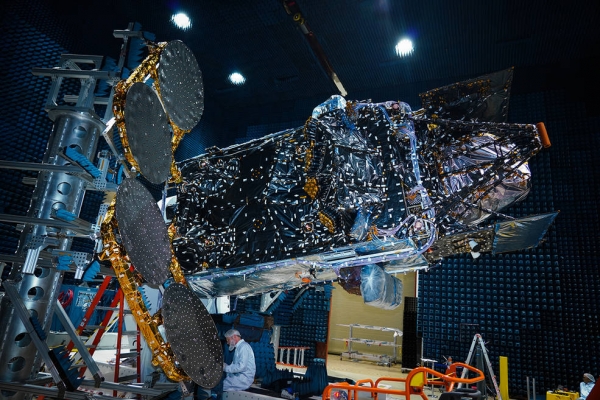Air pollution is an existential threat to millions of Americans with asthma and other health issues. Responding to that threat, NASA and the Smithsonian Astrophysical Observatory are innovating to improve observations of air quality in North America.
Tropospheric Emissions: Monitoring of Pollution (TEMPO) is an ultraviolet and visible spectrometer that will be hosted on Intelsat 40e, a commercial satellite built by Maxar Technologies. TEMPO’s sensors will measure sunlight reflected and scattered by Earth’s surface and atmosphere, allowing it to observe the spectral signatures of air pollutants, including ozone and nitrogen dioxide.
On Feb. 27, 2023, the instrument and the entire spacecraft successfully passed pre-launch testing at Maxar's facility in Palo Alto, California. TEMPO underwent thermal vacuum, dynamics, and end-to-end capability testing to ensure it will withstand launch conditions and the harsh environment of space. Tests also ensured that commanding, telemetry, and mission data are flowing accurately.
Scheduled to launch in April 2023 from Cape Canaveral aboard a SpaceX Falcon 9 rocket, TEMPO will be the first instrument to observe air pollution hourly during daytime over North America. It will make measurements across an area that extends from Puerto Rico to northern Canada and from the Atlantic Ocean to the Pacific, encompassing the entire continental United States.
Read more at NASA
Image: The TEMPO air pollution sensor is hosted on Intelsat 40e, seen here at the Maxar Technologies facility in Palo Alto, California, where it was built. The instrument and the entire spacecraft recently passed pre-launch testing at the facility.
Credits: Courtesy of Maxar via NASA


